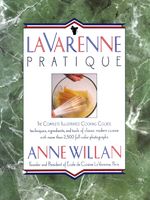Label
All
0
Clear all filters
Cheese
Appears in
By Anne Willan
Published 1989
To the gourmet, cheese is the most varied and tantalizing of foods. The cheeses of France are outstanding in their number and variety, but many other countries have a rich heritage. Thanks to different kinds of milk—whole or skim, from the cow, goat or sheep—plus a variety of preparation and aging methods, thousands of cheeses are produced around the world, most of them intended to be eaten plain with bread, crackers or fruit; some cheeses are also indispensable for cooking.
Cheese is made by curdling milk or cream. At its simplest, this happens naturally when milk (or cream) is soured by the natural production of lactic acid. To make cheese, milk is now most commonly curdled by adding rennet. (Vegetarian cheese is made with non-animal rennet.) Cheesemaking is a question of juggling moisture and acidity to achieve the desired result. The speed, timing and temperature of curd formation, how finely the curds are broken up, and how the cheese is shaped, all radically affect the finished product. Some cheeses (such as ricotta) are left to drain, while others are pressed. Still others are heated before pressing — Gruyère is a prime example.
In this section
Part of
Advertisement
Advertisement
The licensor does not allow printing of this title


